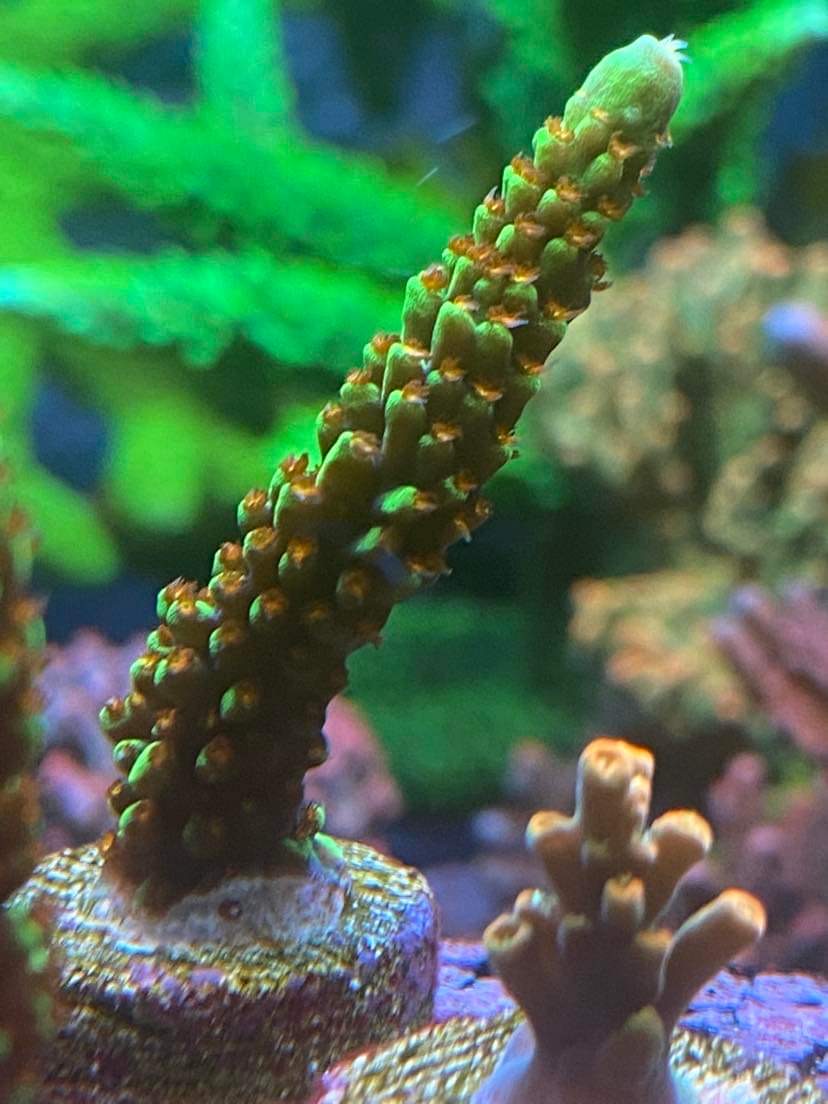Experimenting and playing god with corals is something that will always grab my attention. So when I noticed Ben Duncan, the owner of Exotic Aquaculture, a boutique reef store In Melbourne, Australia doing some grafting with iconic staghorn Acropora I just HAD to follow along for the results.
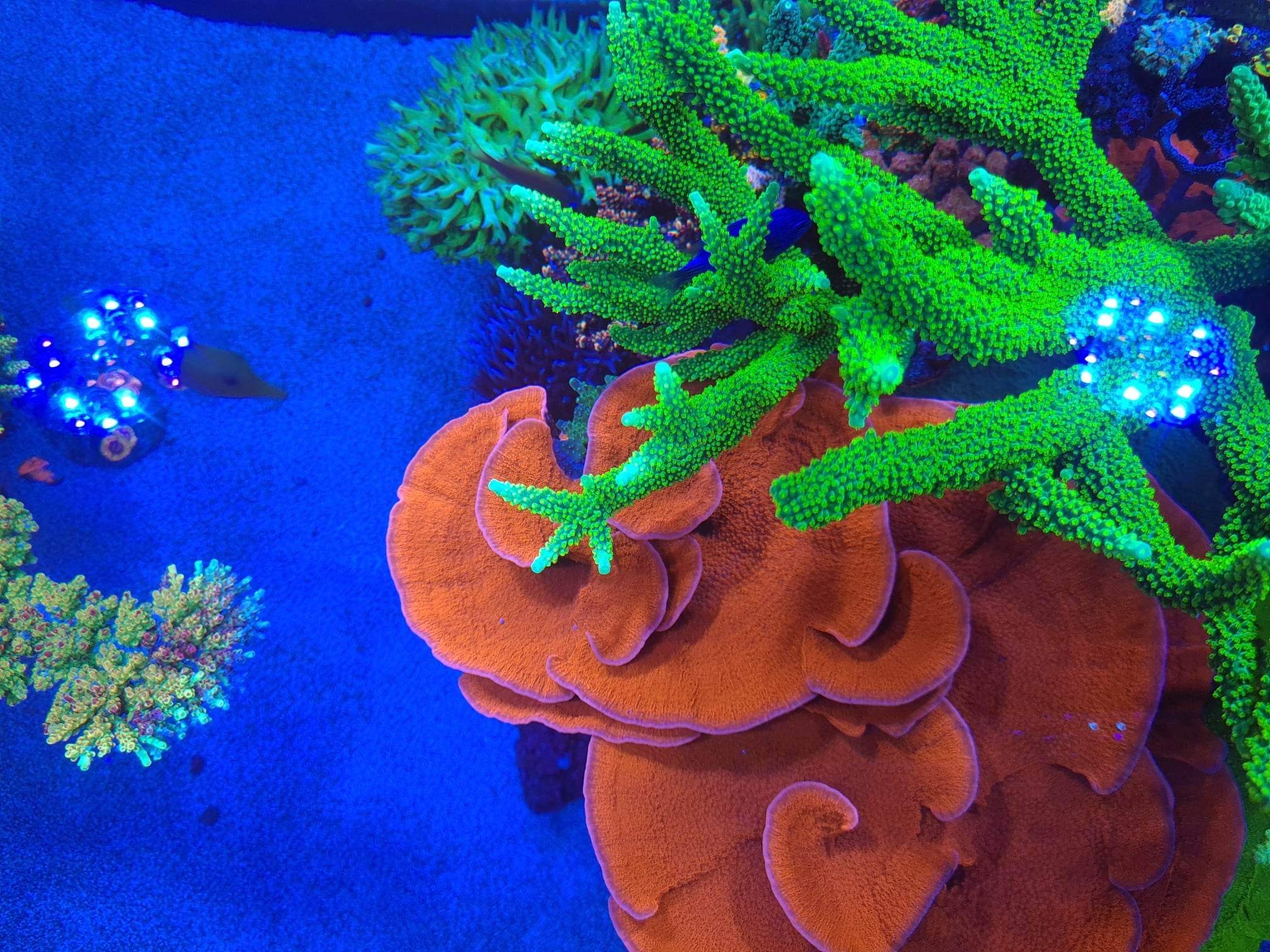
An Australian Legacy Coral
The Aussie version of the classic Bali Green Slimer is the Dallas Acro. They are both bright green, hardy stags, but the similarities kind of stop there. The Dallas is an Australian legacy coral, for the last twenty-five years or so it has been grown and shared around thousands of reef tanks. It is readily available in Australia but seemingly has never been collected from the wild since its first appearance decades ago.
Some time in the more recent past, another version appeared. For want of a better name, the ‘Red Polyp Dallas’ appeared on the scene approximately five years ago. The Red Polyp Dallas can vary from tank to tank but generally has a darker maroon stem with green corallites and bright reddish-orange polyps.
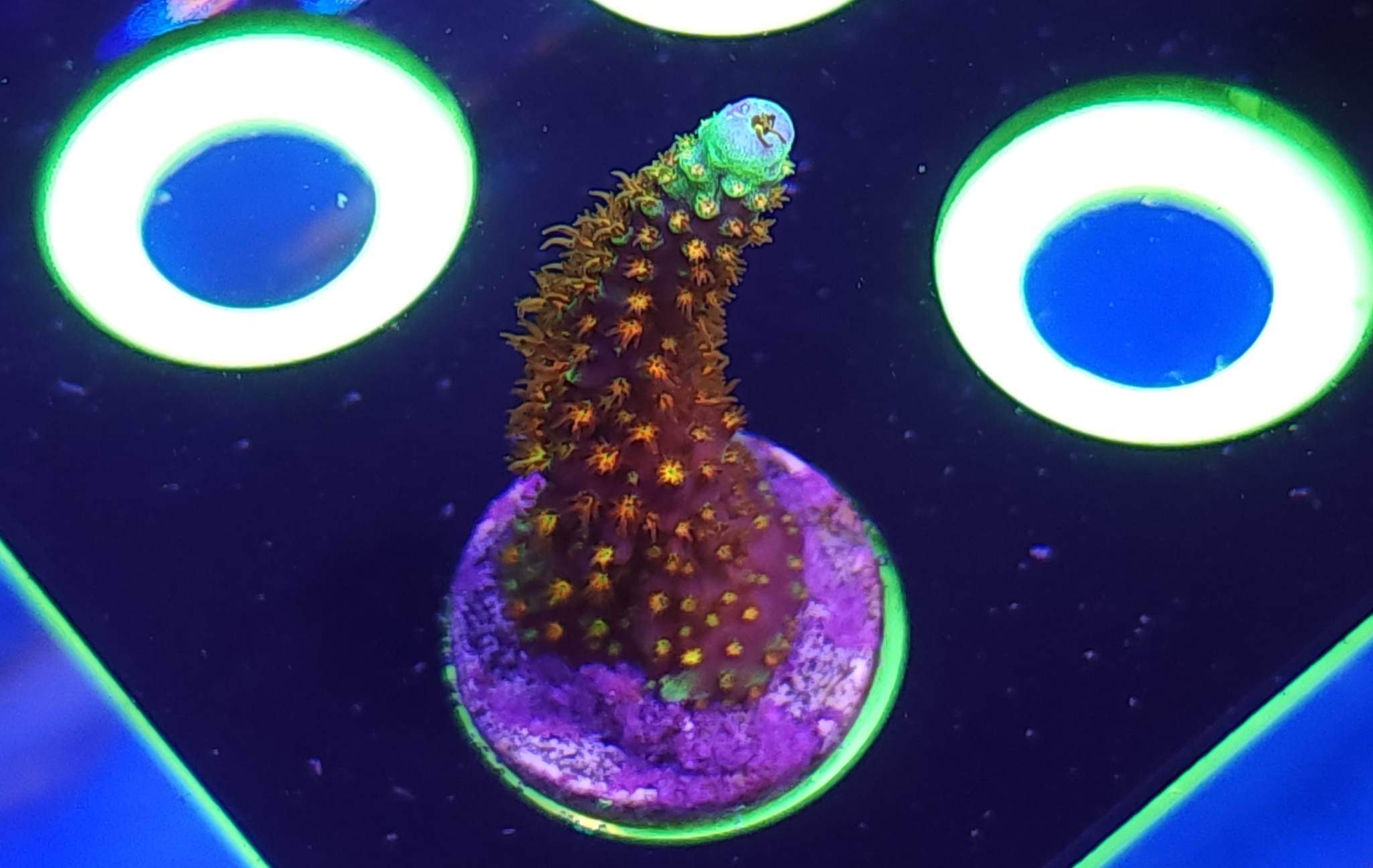
There is a story that a piece of regular Dallas sitting in an LFS display tank in Melbourne started turning red one day which seems a feasible story given the similarities however there are many that claim they are different species. The Red Polyp Dallas does seem to grow significantly slower than the original green and also seems to be less robust. This is backed up by the fact that frags of the RPD aren’t readily available and will still carry a price tag of over $100AUD.
Six months ago, Ben decided to find out not only if they were the same species but seeing if the two types would grow side by side or even fuse together.
Dallas Fusion
Two frags of similar size were cut from a parent colony, paying particular attention to the cut edges that would form the fused seam. The idea was to cut the frags so the edges fit together perfectly without giving any room to heal and grow without being forced into the cut edge of the opposing coral. Fusing corals is not as easy as one may think and even using two of the exact same species rarely works the way we’d hope but instead they normally form a bulbous growth edge each and force each other upward until one gets the upper hand and grows over.
Ben’s idea was that if the Dallas and RPD grew side-by-side without damaging each other, then he could be quite confident that they are the same species. However, in this case, the two pieces healed together on the cut edges almost immediately, and within weeks fusion was clear. The photos show a very defined line separating the two corals but on closer inspection, some polyps along the seam appeared to have transferred sides.
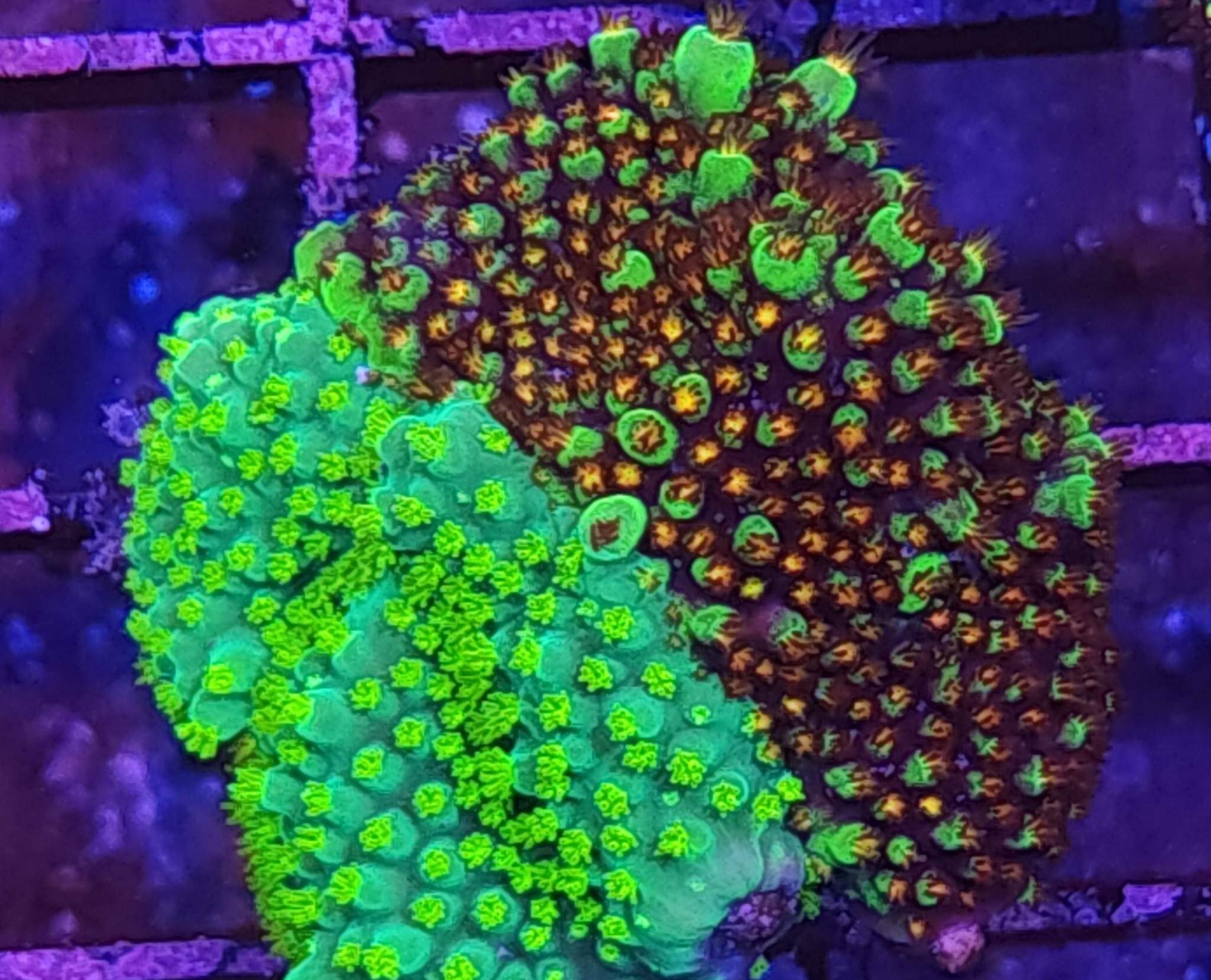
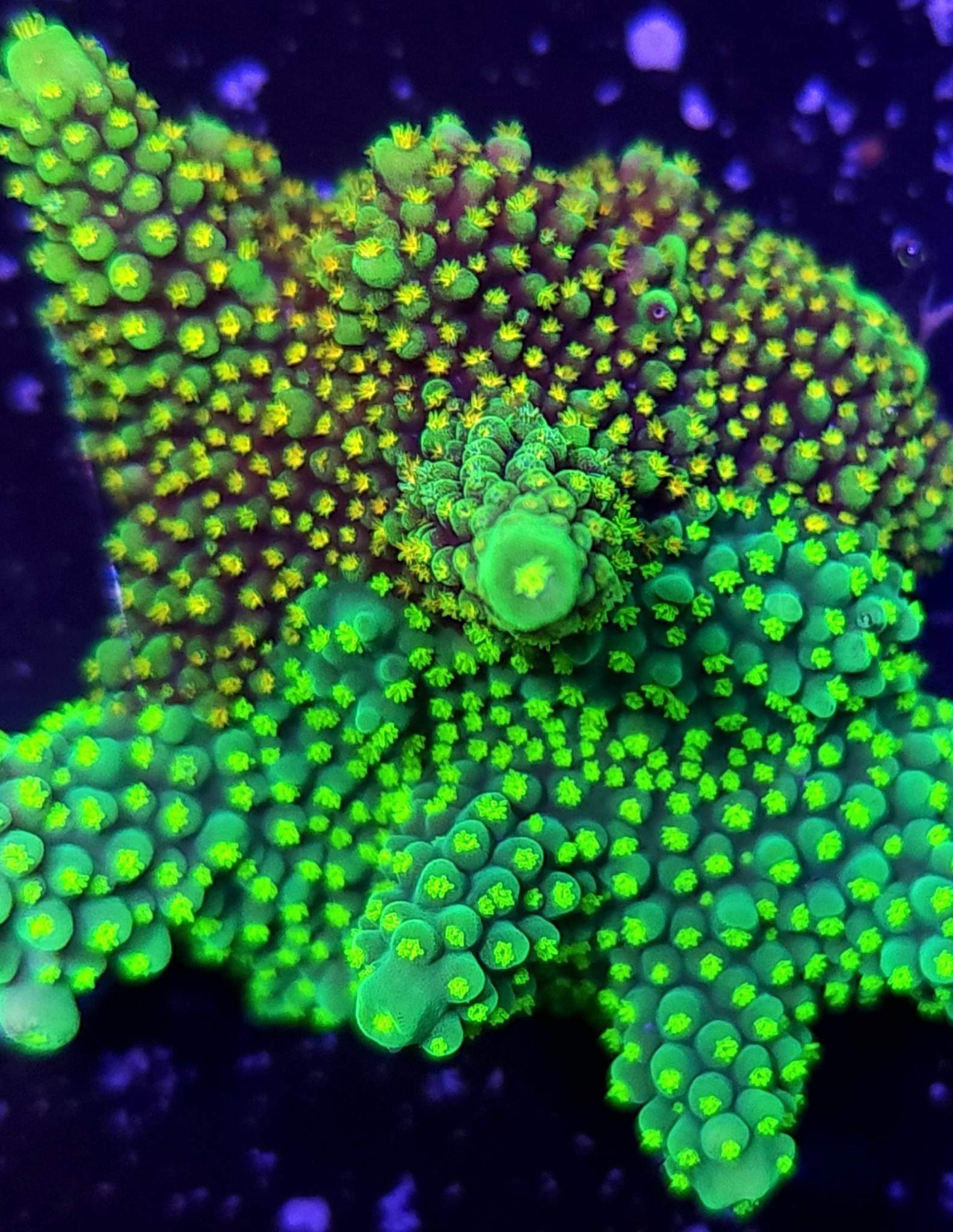
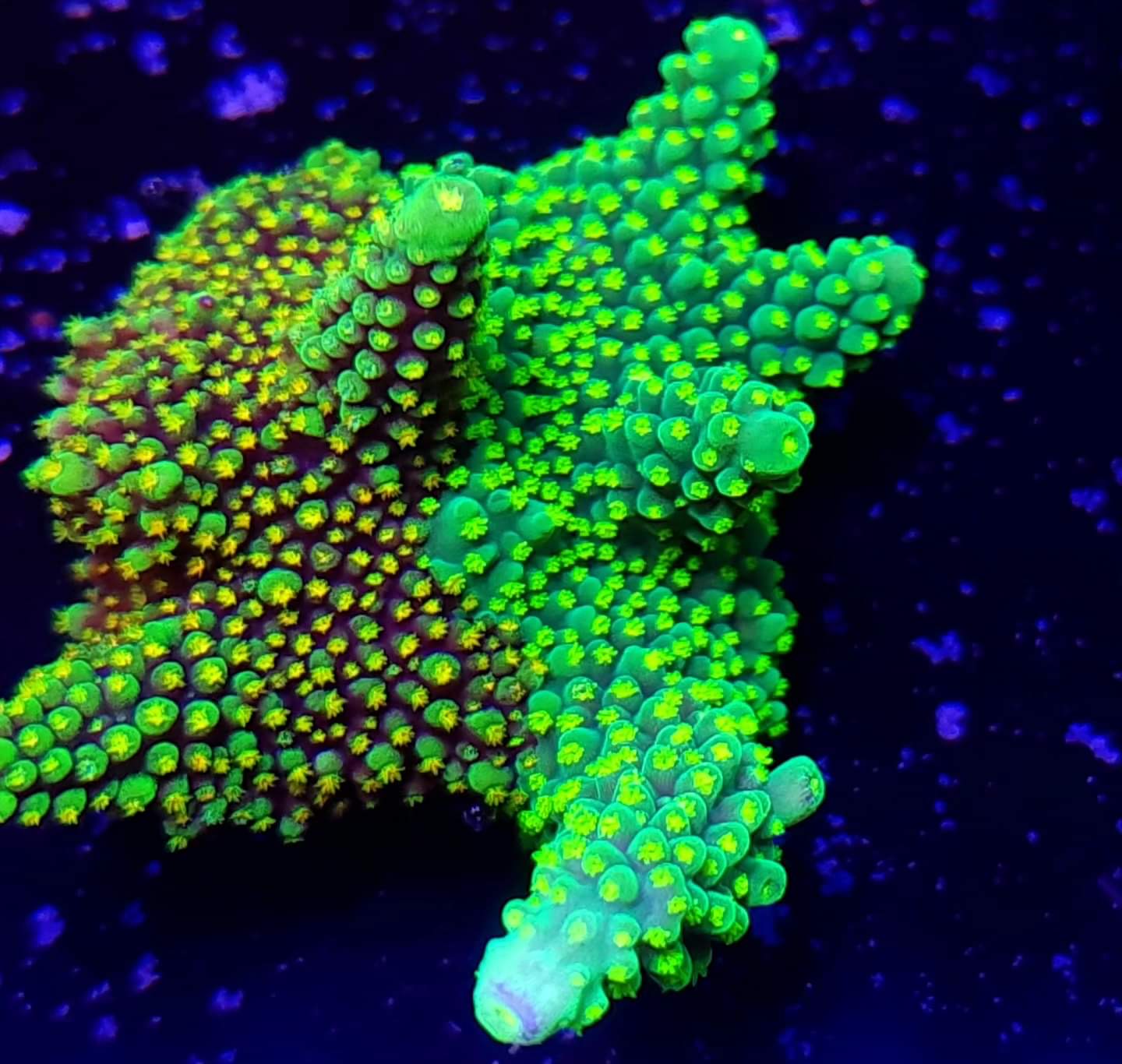
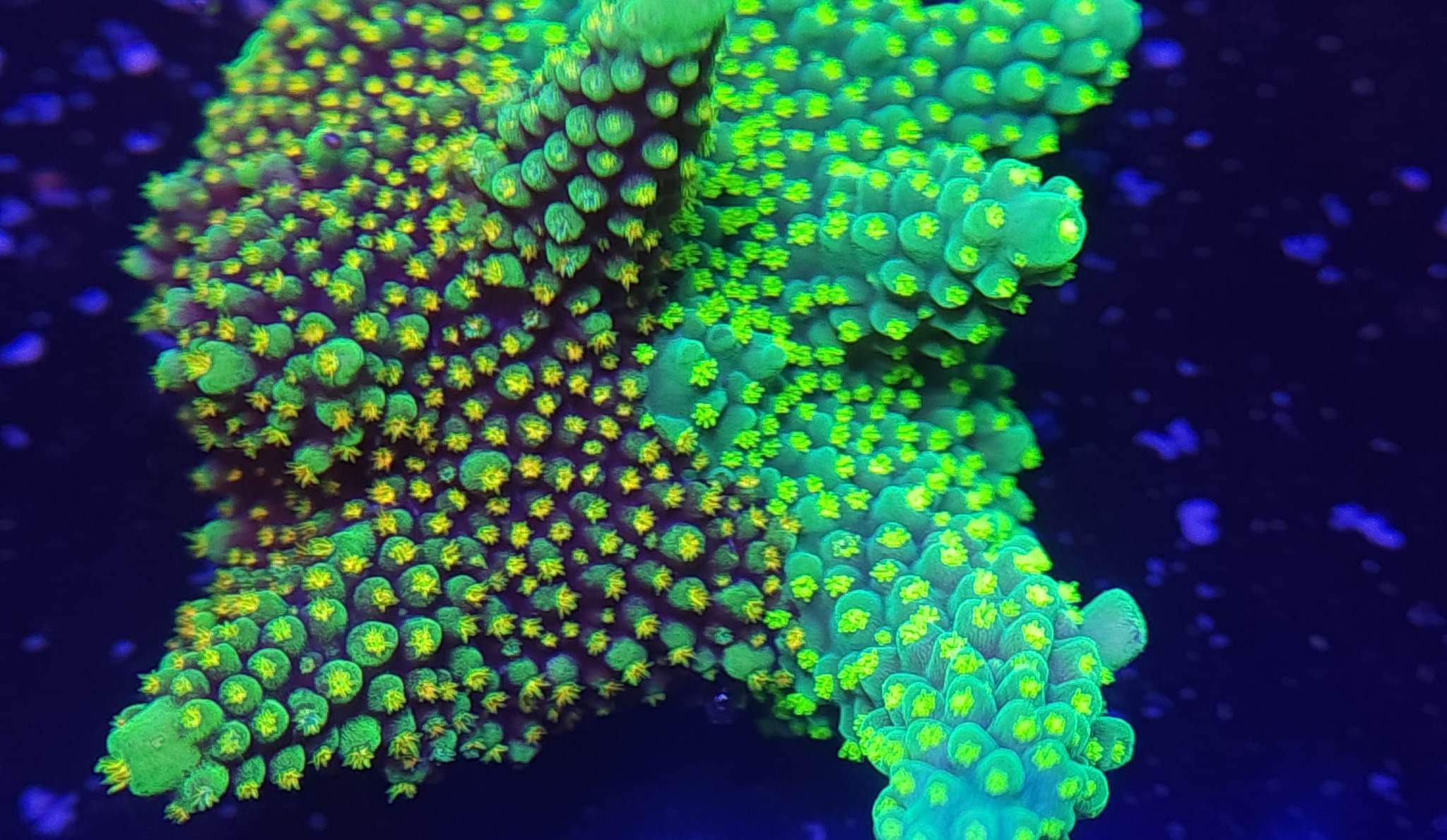
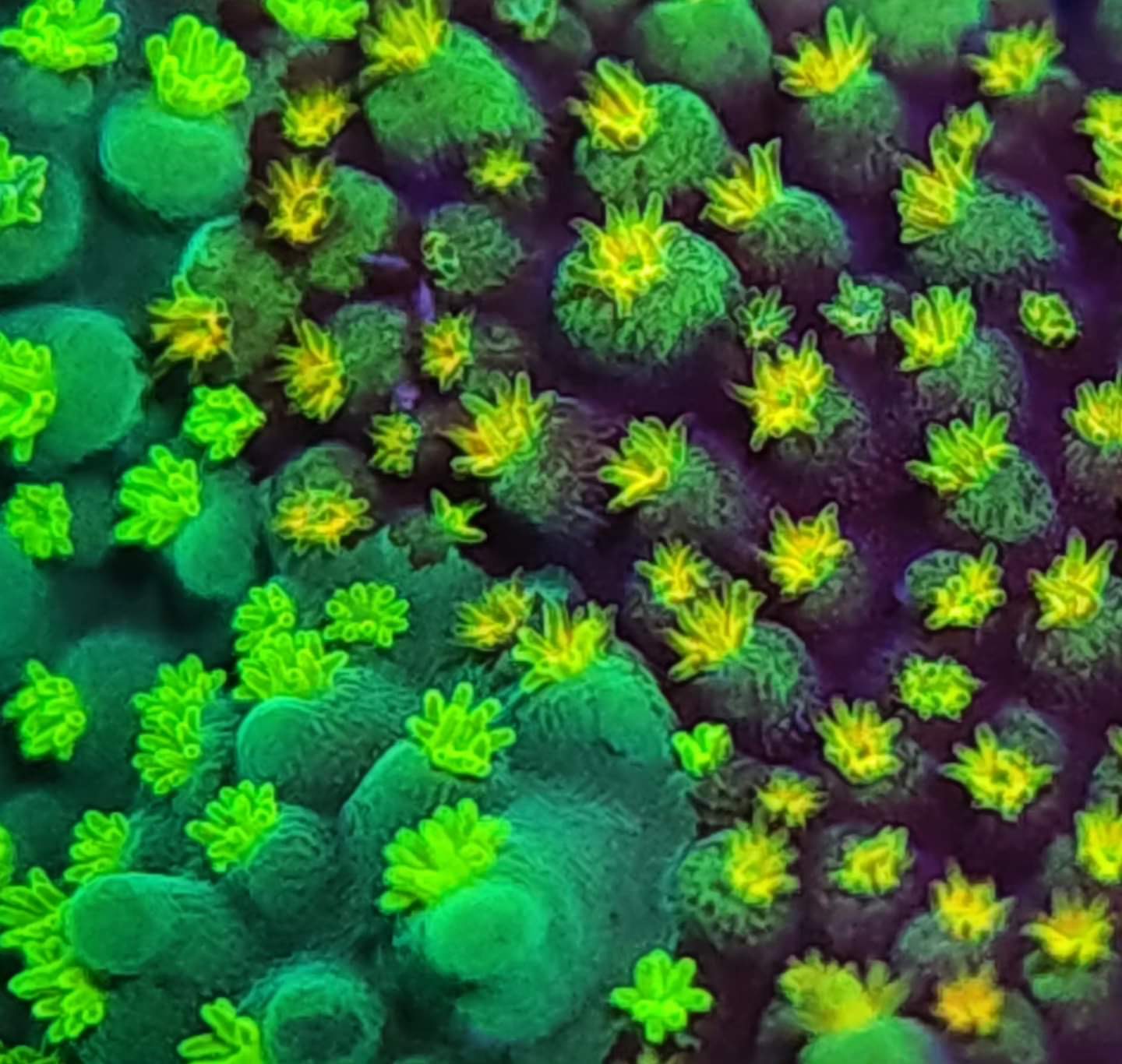
Four months later the results seen are even more interesting, each side appears to have taken some characteristics from the other. The bright green polyps of the Dallas have remained but the core has adopted a hint of the maroon from the RPD. The RPD appears to have taken more from the Dallas, assuming this is due to faster growth rate of the Dallas?
The usual darker red or orange has become brighter yellow and the dark maroon core has become slightly brighter and more green. Time will tell what this piece will become over the next year. It appears to be becoming a new version of the Dallas with a darker green/ maroon core and more yellow polyps. A less desirable result also appears to be possible and that is the faster-growing more robust characteristics of the OG Dallas will eventually overrun the RPD and we end up with a regular colony of Dallas.
Little experiments like this really get my reef juices going and I hope they become more commonplace among us all.
